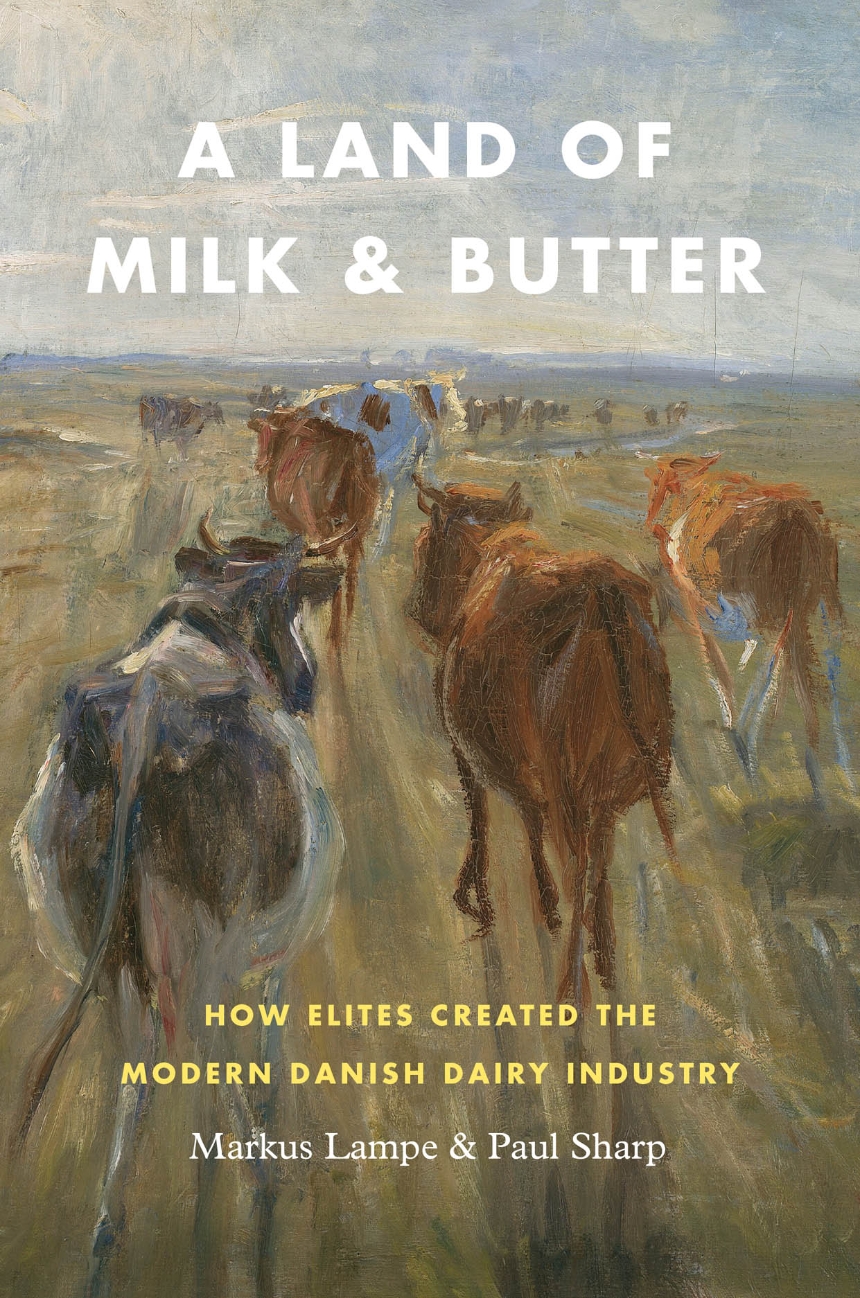A Land of Milk and Butter
How Elites Created the Modern Danish Dairy Industry
9780226549507
9780226549644
A Land of Milk and Butter
How Elites Created the Modern Danish Dairy Industry
How and why does Denmark have one of the richest, most equal, and happiest societies in the world today? Historians have often pointed to developments from the late nineteenth century, when small peasant farmers worked together through agricultural cooperatives, whose exports of butter and bacon rapidly gained a strong foothold on the British market.
This book presents a radical retelling of this story, placing (largely German-speaking) landed elites—rather than the Danish peasantry—at center stage. After acquiring estates in Denmark, these elites imported and adapted new practices from outside the kingdom, thus embarking on an ambitious program of agricultural reform and sparking a chain of events that eventually led to the emergence of Denmark’s famous peasant cooperatives in 1882. A Land of Milk and Butter presents a new interpretation of the origin of these cooperatives with striking implications for developing countries today.
This book presents a radical retelling of this story, placing (largely German-speaking) landed elites—rather than the Danish peasantry—at center stage. After acquiring estates in Denmark, these elites imported and adapted new practices from outside the kingdom, thus embarking on an ambitious program of agricultural reform and sparking a chain of events that eventually led to the emergence of Denmark’s famous peasant cooperatives in 1882. A Land of Milk and Butter presents a new interpretation of the origin of these cooperatives with striking implications for developing countries today.
320 pages | 10 halftones, 29 line drawings, 25 tables | 6 x 9 | © 2018
Markets and Governments in Economic History
Economics and Business: Economics--Agriculture and Natural Resources, Economics--Development, Growth, Planning, Economics--History, Economics--Urban and Regional
Reviews
Table of Contents
Acknowledgments
Glossary of Weights and Measures
1 Introduction
2 The Economic and Political Context for Danish Agricultural Development, ca. 1660–1850
3 The Agricultural Reforms, 1750s–1800s
4 The Spread of the Holstein System
5 From Bullshit to Butter: Accounting and Production Decisions
6 Science, Innovation, and the Dissemination of Knowledge
7 How the Danes Discovered Britain
8 Industrial and Trade Policy
9 The Spread of Modern Dairying beyond the Estates: The Rise of the Cooperatives
10 Agriculture, Industry, and Modern Economic Growth in Denmark
11 Lessons from the Danish Agricultural Revolution for Developing Countries
Notes
References
Index
Glossary of Weights and Measures
1 Introduction
2 The Economic and Political Context for Danish Agricultural Development, ca. 1660–1850
3 The Agricultural Reforms, 1750s–1800s
4 The Spread of the Holstein System
5 From Bullshit to Butter: Accounting and Production Decisions
6 Science, Innovation, and the Dissemination of Knowledge
7 How the Danes Discovered Britain
8 Industrial and Trade Policy
9 The Spread of Modern Dairying beyond the Estates: The Rise of the Cooperatives
10 Agriculture, Industry, and Modern Economic Growth in Denmark
11 Lessons from the Danish Agricultural Revolution for Developing Countries
Notes
References
Index
